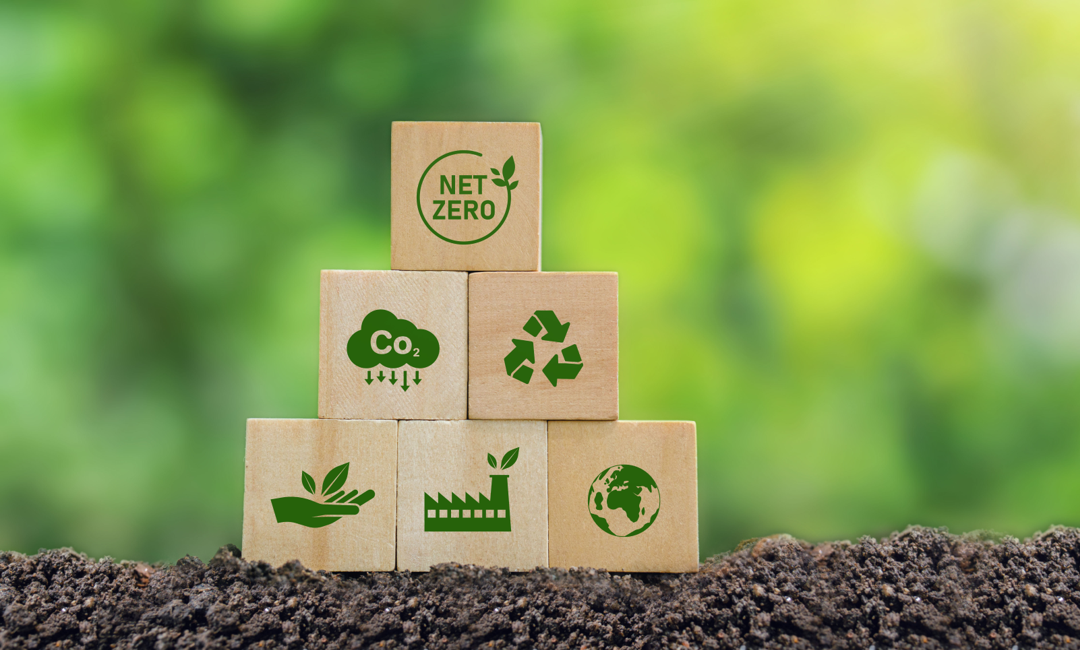What are the differences between Carbon Neutral, Carbon offsetting and Net Zero?

Climate change is one of the greatest challenges facing humanity and the planet and, despite multiple global commitments to limit global warming, scientists are clear that not enough is yet being done, with more rapid and significant action required across all sectors of the economy during this decade.
Climate change will have a significant impact on the long-term changes in temperature, weather patterns, and other environmental factors caused by the accumulation of greenhouse gases in the Earth’s atmosphere. This accumulation is primarily caused by human activities, such as burning fossil fuels and deforestation.
We’re already witnessing significant environmental impacts, including rising sea levels, more frequent and severe weather events, increased wildfires, and reduced biodiversity. These impacts can lead to the loss of habitats, extinction of species, and damage to ecosystems.
Like many other Governments across the world, the UK government has set out a plan to tackle climate change and protect the environment, which includes a range of policy initiatives and targets aimed at reducing carbon emissions and promoting more sustainable practices. They have set a target to achieve net zero carbon emissions across the whole economy by 2050, which will require significant carbon reduction activity during this decade if it is to remain viable.
But what does Net Zero carbon emissions mean? Is there a difference between Net Zero Carbon and Carbon Neutral? What is Carbon Offsetting and is it a viable option to reduce a Carbon Footprint and increase sustainability? In fact, what does Sustainability and Carbon Footprint even mean?
In this blog we aim to explain the terminology that is frequently used when discussing climate change.
- 1.
- 2.
- 3.
- 4.
- 5.
- 6.
- 7.

What does Sustainability mean?
Sustainability refers to the ability to maintain or uphold a level of activity or process, over an extended period without the depletion of natural resources. Its goal is to protect resources to ensure they remain available for future generations.
It involves taking a long-term view and balancing environmental, economic, and social considerations to create an even-handed world that is resilient, and able to thrive in the future. This includes minimising negative impacts on the environment, such as reducing greenhouse gas emissions, preserving biodiversity, and promoting efficient use of natural resources.
Sustainability is essential for protecting the natural environment and the Earth’s ecosystems. By promoting sustainable practices, we can help reduce the negative impact of human activities on the environment, such as pollution, deforestation, and climate change.

What is a Carbon Footprint?
A carbon footprint refers to the total amount of greenhouse gas emissions that are produced by an individual, organisation, event, product, or service. These emissions are measured in units of carbon dioxide equivalent (CO2e), which reflects the amount of CO2 that would have the same warming effect as the other greenhouse gases emitted.
A carbon footprint includes both direct emissions, such as those from directly burning fossil fuels in company vehicles or through heating facilities, and indirect emissions, such as those from sourcing, production and transportation of goods and services that are consumed. These footprints will vary significantly by organisation and industry and therefore so will any mitigation strategies.
Calculating a carbon footprint involves identifying and quantifying the sources of greenhouse gas emissions associated with an activity or entity. The Government Mandatory Greenhouse Gas reporting helps businesses to identify their Carbon Footprint and track the savings made over time.
Reducing carbon footprint is an important way to mitigate climate change and minimise the impact of your business activities on the environment. This can be achieved by implementing sustainable practices such as reducing energy consumption, using renewable energy sources, promoting eco-friendly transportation, and reducing waste.

What does Carbon Neutral mean?
Carbon neutral refers to achieving a balance between the amount of carbon dioxide and other greenhouse gas emissions released into the atmosphere and the amount removed from it. In simple terms, ensuring that your business does not release more carbon dioxide or other greenhouse gas into the atmosphere than absorbed.
To move closer to carbon neutrality, a business can reduce its carbon footprint by taking measures to reduce its emissions, such as increasing energy efficiency, switching to renewable energy sources, using electric vehicles and optimising vehicle runs.
Buying offsetting credits, as explained below, can provide a mechanism for organisations to fast-track to carbon neutrality status but it is critical that they don’t distract from taking the underlying action necessary to reduce carbon emissions in the first place, as by themselves they will not be sufficient.
Carbon neutrality is increasingly becoming an important goal for companies to combat climate change and reduce their impact on the environment.

What is Net Zero Emissions?
Net zero refers to a state where the amount of greenhouse gas emissions produced is equal to the amount of greenhouse gases removed from the atmosphere. This means that any emissions produced are offset by measures to remove or reduce them.
In contrast to carbon neutrality, which focuses on achieving a balance between emissions and removals of carbon dioxide specifically, net zero encompasses all greenhouse gases, including methane, nitrous oxide, and fluorinated gases. All of which have significant warming properties and will make the impacts of climate change worse if not fully dealt with.
To reach net zero, individuals, businesses, and governments can reduce their greenhouse gas emissions through energy efficiency, shifting to renewable energy sources, reducing waste, and promoting sustainable practices. Additionally, they can invest in measures to remove carbon from the atmosphere, such as afforestation (growing trees in an area where previously there were none), reforestation, and carbon capture and storage technologies.
The scale and speed of change required to deliver a net zero economy should not be underestimated with many of the technologies likely to be necessary not yet invested or proven at scale. Although not all the answers are known however what is critical is that real action is taken now to reduce emissions, wherever possible.
Net zero has become a global effort to address climate change, with many countries and businesses committing to achieving net-zero emissions by 2050 or earlier.

What is Carbon Offsetting?
Carbon offsetting is compensating for carbon emissions produced by a business by investing in projects that reduce or remove greenhouse gases from the atmosphere.
Carbon offsetting works by purchasing carbon credits or offsets from verified carbon reduction projects such as renewable energy projects, afforestation, and energy efficiency improvements. These projects are designed to reduce or remove greenhouse gas emissions from the atmosphere, and the carbon credits or offsets represent the amount of greenhouse gases that have been avoided or removed as a result.
For example, a business may offset its carbon emissions from its operations by investing in a wind farm project that generates clean energy and reduces carbon emissions. The business then receives carbon credits or offsets equivalent to the amount of carbon dioxide emissions that have been avoided by the wind farm project.
While carbon offsetting can be a way for businesses to take responsibility for their carbon emissions and support carbon reduction projects, it should not be a substitute for reducing emissions directly through measures such as energy efficiency and switching to renewable energy sources. The science is clear that carbon offsetting by itself will not be sufficient to effectively tackle climate change.
The market also currently suffers from a lack of regulation and consistent standards to provide stakeholders with confidence that the offsetting is working effectively. Independent bodies like that Integrity Council for the Voluntary Carbon Market are currently working to address this at a global level.
Carbon offsetting should be seen therefore as one tool in a broader strategy to combat climate change and reduce carbon footprints.

What is Mandatory Greenhouse Reporting?
Since 1 October 2013 the UK Government has required that all UK quoted companies (i.e. those listed on the London Stock Exchange) must report on their greenhouse gas emissions as part of their annual Directors’ Report.
This reporting focuses businesses to monitor and manage greenhouse gas emissions and to ensure compliance with environmental regulations. It increases transparency and accountability for emissions and drives the development of effective policies and strategies to reduce emissions and mitigate climate change.

How can Macfarlane Packaging help businesses to achieve Sustainability Goals?
At Macfarlane Packaging we help customers achieve their sustainability goals by ensuring that they are reducing packaging waste and using sustainable packaging materials that optimise their transport fleet.
Our exclusive calculator, the Packaging Optimiser, identifies areas of operational improvement that can reduce the amount of CO2 emissions and reduce the carbon footprint of a business.
